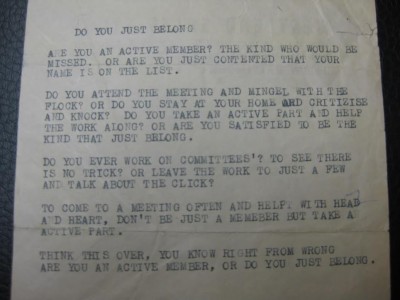A Family Pharmacy: AZO

A blog post by Exhibition Research intern Mandy Benter. To read more posts by interns, click HERE.
My role as an Exhibition Intern at the JMM has largely involved researching and reviewing subjects related to the upcoming Jews, Health, and Healing. My internship thus far has been incredibly rewarding, as I have investigated topics which I have never studied before, namely pharmaceutical history. I’ve read sixteenth century medicinal guide books, studied the changing corner drugstore, and cataloged countless prescriptions. Gradually, I began to gain a greater appreciation of the field, and saw the pharmacy as the true medical marketplace, where doctors, patients, and prescriptions come together.
However, as my supervisor, Curator Karen Falk, adeptly pointed out, I neglected one major detail in my research: how do we make this a Jewish Baltimore story? Individuals may recognize the immense Jewish presence in the field of medicine and pharmacy, but how will we portray this community in the exhibit? As I combed through the JMM’s impressive archives, I began to find the answer: the pharmaceutical fraternity.
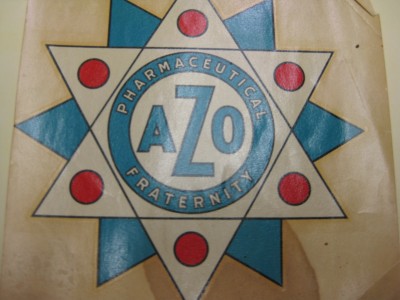
The history of AZO parallels the Jewish experience of medical school. In the early twentieth century, American universities used race-based acceptance quotas to counter the tide of Jewish Americans eager to enter the medical professions. Jewish students in Philadelphia realized the challenges placed before them and decided to band together. In 1919, twelve Jewish students formed Alpha Zeta Omega with the goal of a 100% graduation rate. Just three short years later, AZO began to spread and the University of Maryland’s School of Pharmacy founded the Kappa Chapter.
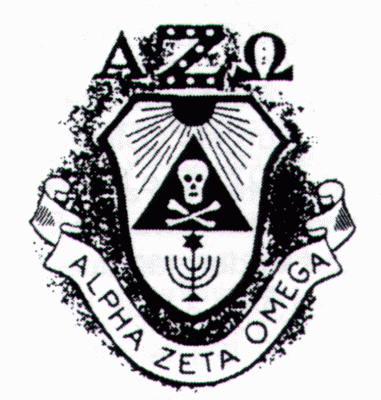
Though AZO was not an official Jewish fraternity and does not remain one today, Judaism and the Jewish experience was very much at the core of the organization. (One can easily identify Jewish imagery in the organization’s original symbol.) Therefore, AZO developed into more than a fraternity, but a community with similar professional goals and values. In fact, Baltimore’s AZO was so close-knit that the organization founded the first women’s auxiliary: the Azoans.
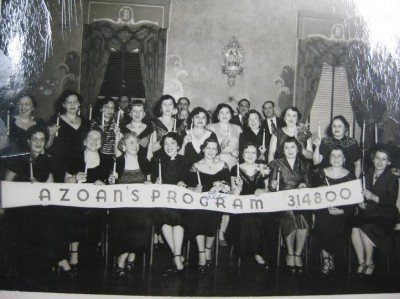
The Azoans was a philanthropic organization of pharmacists’ wives and sisters. The idea for the Azoans was born after Sadie Karpa attended a meeting of the AZO Pharmaceutical Fraternity in Cincinnati and realized how well the women worked together, but without organization. The first meeting was held on October 15, 1931 at the home of Lee Kramer, the first president of the group.
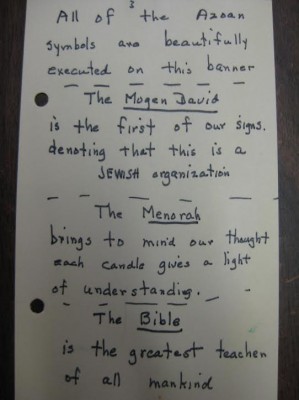
The woman’s organization developed charity events which would profit medical institutions in Baltimore and Israel. With countless bake sales and auctions, the AZOANS were able to purchase an ambulance for the Red Cross, donate an iron lung to Sinai Hospital, and provide dental care to the Baltimore School for the Blind.
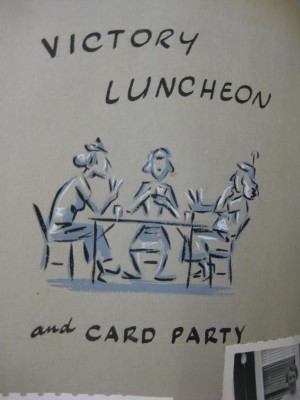
The organization also developed into a vibrant Jewish social organization. When Azoans members had finished their charitable drives and functions, members would often gather together, socialize, and discuss issues of the day. The Azoans were famous for their skits, poems, and songs.
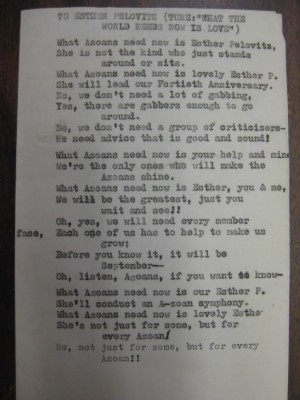
The women of the AZOANS represent the strength of Baltimore’s Jewish pharmacy community. Each neighborhood drugstore had its own loyal customers and its own corner. But, on the weekends, the owners and their wives would come together and discuss how their city could profit from partnership, better health, and better facilities. I hope that Jews, Health, and Healing can accurately display that passion.
